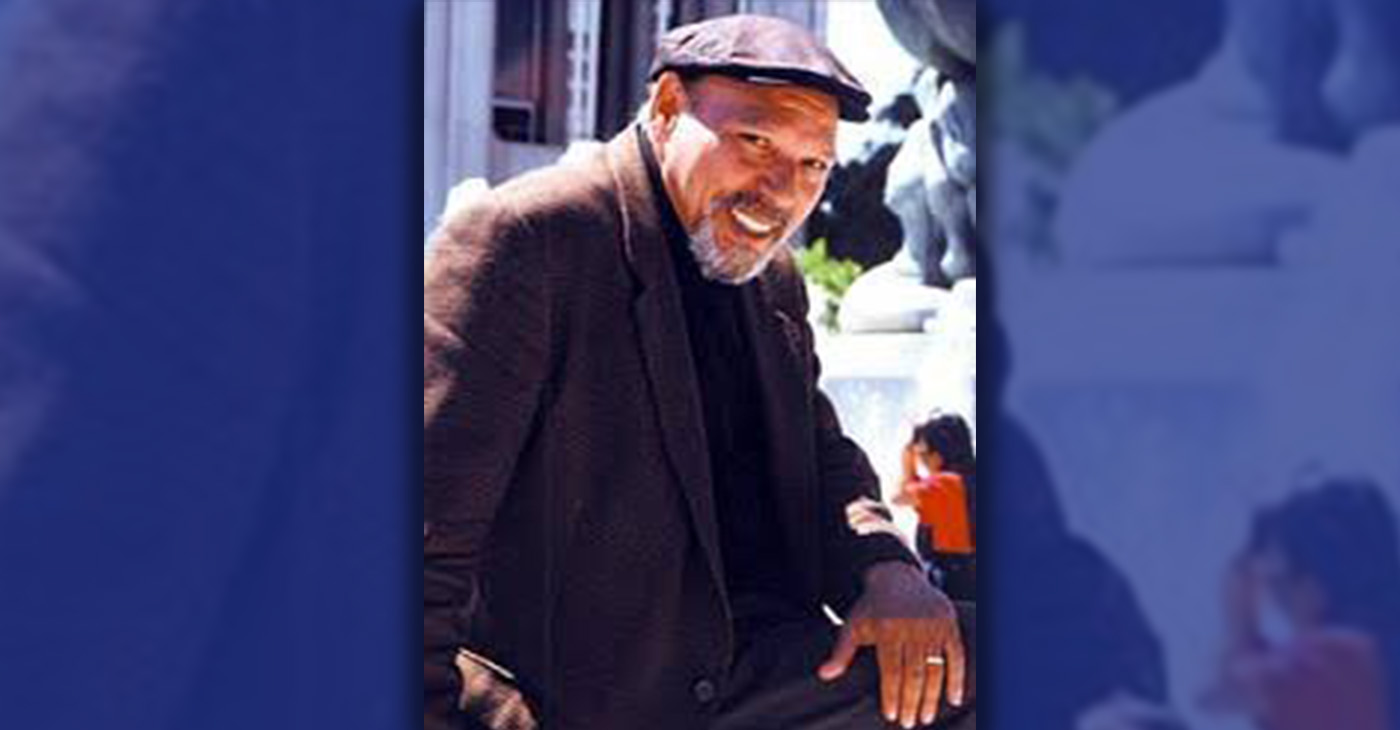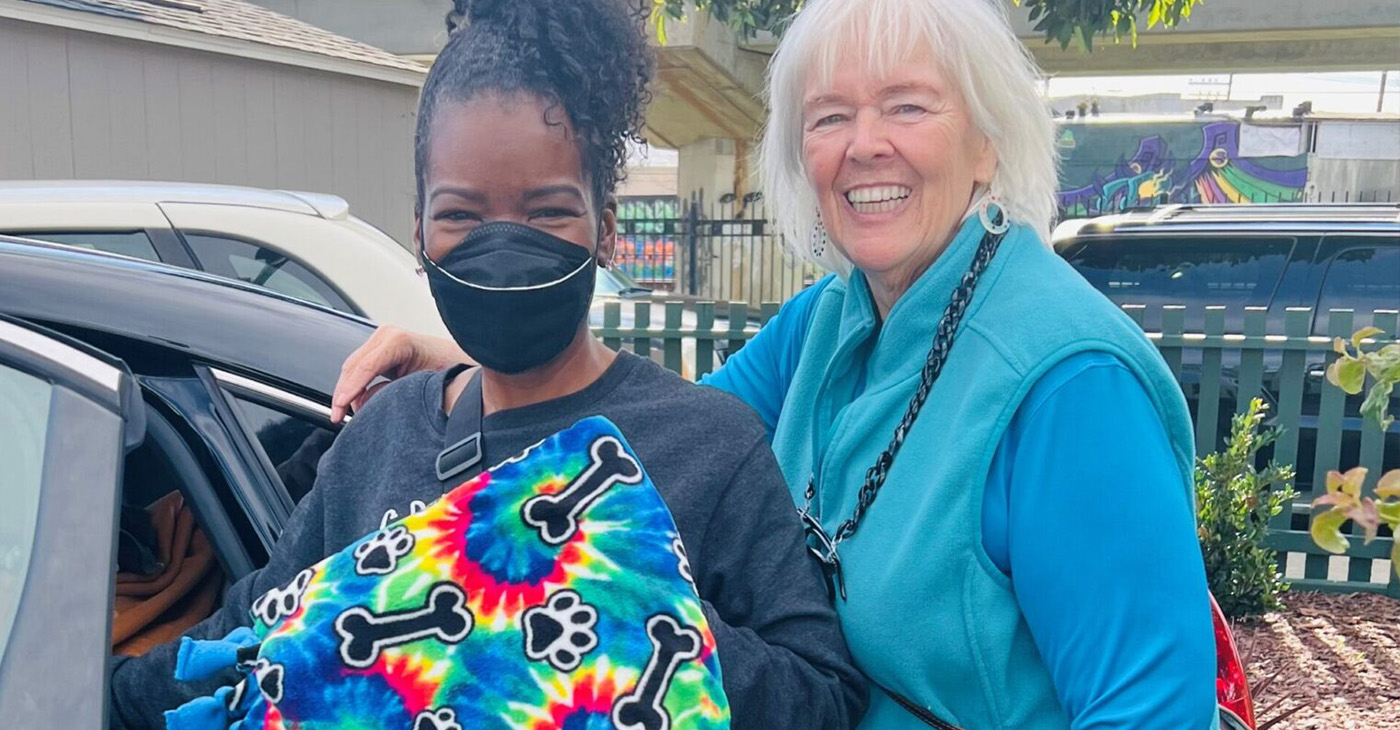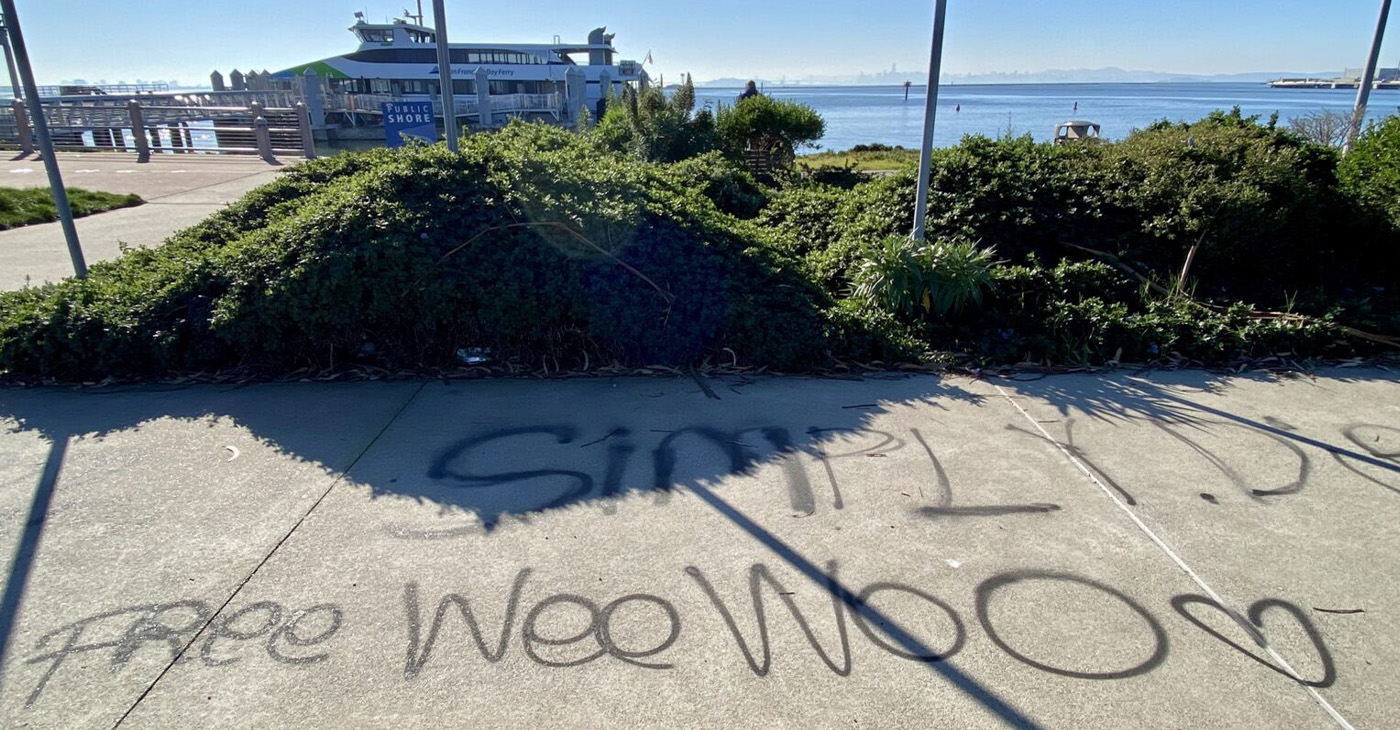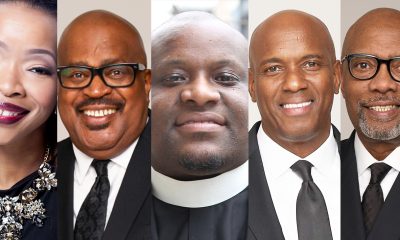Art
The Music Center Celebrates Ailey’s 60th Anniversary
PRECINCT REPORTER GROUP NEWS — Each of the four programs will feature Alvin Ailey’s American masterpiece Revelations. Since its creation in 1960, Revelations has been seen by more audiences around the world than any other modern work, inspiring generations through its powerful storytelling and soul-stirring spirituals.
By The Precinct Reporter News
The Music Center welcomes one of America’s most popular dance companies, Alvin Ailey American Dance Theater, back to Los Angeles with the dance company’s 60th anniversary celebration tour at The Music Center’s Dorothy Chandler Pavilion through April 7. Led by Artistic Director Robert Battle, Ailey’s remarkable dancers – including Danica Paulos of Huntington Beach and Rehearsal Director and Guest Artist Matthew Rushing of Los Angeles, who has been with the Company for more than 25 years – will perform four different programs of diverse repertory featuring West Coast premieres, new productions and returning classics. Part of the 2018/2019 season of Glorya Kaufman Presents Dance at The Music Center, which is curated by The Music Center’s artistic division The Music Center Arts (TMC Arts), the engagement includes four special programs: Trailblazers, featuring the West Coast premiere of Lazarus by Rennie Harris – the company’s first two-act ballet; Bold Visions, featuring West Coast premiere of Wayne McGregor’s Kairos and the Los Angeles premiere of The Call by Ronald K. Brown, alongside Jawole Willa Jo Zollar’s Shelter; a Timeless Ailey program with rarely seen gems by one of America’s greatest cultural leaders; and a Musical Inspirations program featuring the Los Angeles premiere of Ailey star Jamar Roberts’ Members Don’t Get Weary, a new production of Robert Battle’s Juba, and his tour-de-force duet Ella.
Each of the four programs will feature Alvin Ailey’s American masterpiece Revelations. Since its creation in 1960, Revelations has been seen by more audiences around the world than any other modern work, inspiring generations through its powerful storytelling and soul-stirring spirituals. Springing from Ailey’s childhood memories of growing up in the South and attending services at Mount Olive Baptist Church in Texas, Revelations pays homage to the rich African-American cultural heritage and explores the emotional spectrum of the human condition.
“Alvin Ailey forever changed the American landscape by raising up the lives and cultural heritage of African Americans for all to see, opening the hearts and minds of people of every background and elevating the world of the performing arts,” said Robert Battle. “During this milestone season, we are thrilled to return to Los Angeles, the city that was home to Mr. Ailey for many years, and where he fell in love with dance and launched his career. We honor Alvin Ailey’s storied legacy with performances across North America, educational programs that enlighten young people and develop the next generation of performing artists. What Mr. Ailey gave us is more than a repertory and a tradition. It is a movement, a direction, a desire, a conviction that if the spirit is to live it must rise. We dedicate our 60th anniversary to the next ascent.”
Audiences will experience Ailey’s first ever two-act work with the West Coast premiere of Rennie Harris’ Lazarus. Inspired by the life and legacy of Alvin Ailey, and addressing the racial inequities America faced in 1958 when the company was founded and which continue to challenge today, Lazarus is an ensemble work featuring a soundtrack that melds Nina Simone, Terrence Trent D’Arby, Michael Kiwanuka, Odetta, original music by Darrin Ross, and the voice of Alvin Ailey. The New York Times said, “… Mr. Harris gives us something like heaven,” and “… the style has a spiritual force that’s uplifting, and the pleasure of it is mixed with a revelation of the past in the present, of black history in the body language.”
Wayne McGregor’s Kairos, the second piece the choreographer set on the company following
Chroma in 2013, is performed to a reimagined Vivaldi’s The Four Seasons by experimental composer Max Richter in the Bold Visions program. The Dance Enthusiast described the company’s performance of Kairos as “the dancers of Alvin Ailey American Dance Theater stay true to Wayne McGregor’s intellectual brilliance without sacrificing the trademark spirituality of Ailey.” The Music Center opened its current season of Glorya Kaufman Presents Dance at The Music Center with Company Wayne McGregor/Autobiography and will again present McGregor’s work during its upcoming presentation of Adès & McGregor: A Dance Collaboration this coming July. Richter was at the helm of another Music Center presentation, The Music Center Presents Max Richter’s SLEEP, this past summer in Grand Park.
Ronald K. Brown’s seventh work for Ailey, The Call, will make its Los Angeles premiere at The Music Center and is included in the Bold Visions program. Brown, a 2018 Dance Magazine Award recipient, describes the work, which seamlessly blends modern and West African dance idioms, as “a love letter to Mr.
Ailey.” The music includes Johann Sebastian Bach (recorded by Chris Thile, Edgar Meyere & Yo-Yo Ma), Mary Lou Williams Trio, and Asase Yaa. Jawole Willa Jo Zollar’s Shelter, a passionate statement about the physical, is also featured on the Bold Visions program.
Honoring Ailey’s 60th anniversary, the company will showcase Timeless Ailey, a program that brings treasures by the company’s iconic founder back to the stage. Excerpts from rarely seen gems, including Blues Suite, Streams, Mary Lou’s Mass, The Lark Ascending, Hidden Rites, Phases, Opus McShann, Pas de Duke, and For “Bird” – With Love, will be joined by perennial favorites such as Memoria, Night Creature, and Cry.
The Musical Inspirations program includes Robert Battle’s first work for the company, Juba (2003), a quartet with a score by frequent collaborator John Mackey; Ailey dancer and 2016 “Bessie” Award recipient Jamar Roberts’ first work for Alvin Ailey American Dance Theater, Members Don’t Get Weary, set to the powerful music of the legendary American jazz saxophonist and composer John Coltrane; and Ella, a highenergy comical dance originally created as a solo and reinvented as a duet in anticipation of the legendary singer Ella Fitzgerald’s centennial in April 2017.
One hour prior to each performance, The Music Center will host DANCETALKS featuring interviews with Ailey company members. Ticketed guests can join this fascinating behind-the-scenes pre-performance discussion and also have the opportunity to learn a segment from the famed Ailey masterpiece Revelations.
This article originally appeared in the Precinct Reporter Group News.
Activism
Griot Theater Company Presents August Wilson’s Work at Annual Oratorical Featuring Black Authors
The performance explores the legacy of Pulitzer Prize-winning playwright August Wilson whose 10-play Century Cycle chronicles the African American experience across the 20th century, with each play set in a different decade. “Half a Century” journeys through the final five plays of this monumental cycle, bringing Wilson’s richly woven stories to life in a way that celebrates history, resilience, and the human spirit.

By Godfrey Lee
Griot Theater Company will present their Fifth Annual Oratorical with August Wilson’s “Half a Century,” at the Belrose on 1415 Fifth Ave., in San Rafael near the San Rafael Public Library.
The performance explores the legacy of Pulitzer Prize-winning playwright August Wilson whose 10-play Century Cycle chronicles the African American experience across the 20th century, with each play set in a different decade. “Half a Century” journeys through the final five plays of this monumental cycle, bringing Wilson’s richly woven stories to life in a way that celebrates history, resilience, and the human spirit.
Previous performance highlighting essential Black American authors included Maya Angelou, James Baldwin, and Lorraine Hansberry with Langston Hughes.
The play will be performed at 3:00. p.m. on Feb. 20, 21, 22, 27, and 28 at 7:00 p.m., and on Feb. 23 at 3:00 p.m.
For more information, go to griottheatercompany.squarespace.com/productions-v2
Activism
MLK Day of Service Volunteers Make Blankets and Art for Locals in Need
“Everyone has an opportunity to participate,” said Glenda Roberts, kinship support care program manager at CCYSB. “Our nonprofit organization and participants recognize how important it is to give back to the community and this is serving. As Dr. Martin Luther King, Jr. stated, ‘Everybody can be great…because anybody can serve.’”

By Kathy Chouteau
The Richmond Standard
The Contra Costa Youth Service Bureau (CCYSB) and Bethlehem Missionary Baptist Church (BMBC) are collaborating with a team of volunteers for a Dr. Martin Luther King, Jr. Day of Service, Monday, Jan. 20 that will wrap the community’s most vulnerable people in warm blankets and provide them with an uplifting gift of art.
Volunteers will kick off their activities at BMBC at 11 a.m., making blankets for the unhoused people served by the Greater Richmond Interfaith Program (GRIP) and art for those in convalescence in Richmond.
Others will get to work preparing a lunch of chili, salad, a veggie tray, and water for participants, offered courtesy of CCYSB, while supplies last.
“Everyone has an opportunity to participate,” said Glenda Roberts, kinship support care program manager at CCYSB. “Our nonprofit organization and participants recognize how important it is to give back to the community and this is serving. As Dr. Martin Luther King, Jr. stated, ‘Everybody can be great…because anybody can serve.’”
“People of all ages are welcome to participate in the MLK Day of Service,” said Roberts. Volunteers can RSVP via phone to Glenda Roberts at 510-215-4670, ext. 125.
CCYSB Boardmember Jackie Marston and her friends donated the materials and supplies to make the blankets and art projects. The nonprofit is also providing the day’s complimentary lunch, as well as employees to volunteer, under the direction of CCYSB Executive Director Marena Brown.
BMBC, led by Rev. Dr. Carole McKindley-Alvarez, is providing the facility for the event and volunteers from the church, which is located at 684 Juliga Woods St. in Richmond.
Located in Richmond, CCYSB is a nonprofit youth advocacy organization that serves eligible children, youth, and low-income families with a variety of wraparound services so they can thrive. Programs include academic achievement, youth mentorship, truancy prevention and direct response.
Art
Vandalism at Richmond Ferry Terminal Saddens Residents
Residents have been lamenting the destruction online. Ellen Seskin posted photos of the vandalism to the Facebook group, Everybody’s Richmond, on Jan. 12, saying she encountered it while out on a walk. “It was on the sidewalk, the street, the doors to the ferry, even in the art installation and the ‘stone’ benches,” she said. “I reported it but knowing how slow they are about getting things done — I just know that the longer you leave graffiti, the more likely they are to spray it again.”

The Richmond Standard
“This is why we can’t have nice things,” stated the post on NextDoor.
The post referenced images of graffiti at the Richmond Ferry Terminal. Not just on the terminal, but also on public artwork, on trail signs, on public benches and the boardwalk.
On Wednesday, the Standard stopped by to see it for ourselves. The good news was that it appears the graffiti on the terminal and on the artwork, called Changing Tide, have been cleaned for the most part. But graffiti remained abundant in the area around the relatively new ferry terminal, which opened to the public just six years ago.
Graffiti artists tagged benches and the boardwalk. Cars that had done doughnuts in the street marked the cul-de-sac just outside the historic Craneway Pavilion.
A ferry worker told us the graffiti had been there since before he started working for the ferry service about a week ago.
A member of the Army Corps of Engineers who did not want to be named in this report called the scene “sad,” as “they’d done such a nice job fixing it up.”
“It’s sad that all this money has been spent and hoodlums just don’t care and are destroying stuff,” he said.
It wasn’t immediately clear how soon the graffiti would be removed. The Standard reported the graffiti to the city’s graffiti abatement hotline. We were prompted to leave a message reporting the address and location of the graffiti.
Residents have been lamenting the destruction online. Ellen Seskin posted photos of the vandalism to the Facebook group, Everybody’s Richmond, on Jan. 12, saying she encountered it while out on a walk.
“It was on the sidewalk, the street, the doors to the ferry, even in the art installation and the ‘stone’ benches,” she said. “I reported it but knowing how slow they are about getting things done — I just know that the longer you leave graffiti, the more likely they are to spray it again.”
In the comment section responding to Seskin’s post, local attorney Daniel Butt questioned why there aren’t cameras in the area.
On Nextdoor, one resident suggested searching to see if the tags match any accounts on Instagram, hoping to identify the perpetrator.
On its website, the City of Richmond says residents should graffiti immediately call Public Works graffiti removal and/or Code Enforcement at 510-965-4905.
Kathy Chouteau contributed to this report.
-

 Activism2 weeks ago
Activism2 weeks agoWe Fought on Opposite Sides of the Sheng Thao Recall. Here’s Why We’re Uniting Behind Barbara Lee for Oakland Mayor
-

 #NNPA BlackPress2 weeks ago
#NNPA BlackPress2 weeks agoRev. Dr. Jamal Bryant’s Black Church Target Boycott Mobilizes 150,000
-

 Activism4 weeks ago
Activism4 weeks agoOakland Post: Week of March 5 – 11, 2025
-

 Activism3 weeks ago
Activism3 weeks agoSan Francisco Is Investing Millions to Address Food Insecurity. Is Oakland Doing the Same?
-

 #NNPA BlackPress4 weeks ago
#NNPA BlackPress4 weeks agoTrump Moves to Dismantle Education Department
-

 #NNPA BlackPress2 weeks ago
#NNPA BlackPress2 weeks agoRecently Approved Budget Plan Favors Wealthy, Slashes Aid to Low-Income Americans
-

 #NNPA BlackPress4 weeks ago
#NNPA BlackPress4 weeks agoFighting to Keep Blackness
-

 Activism2 weeks ago
Activism2 weeks agoFaith Leaders Back Barbara Lee for Mayor, Criticize Candidate Loren Taylor for Dishonest Campaigning






















































